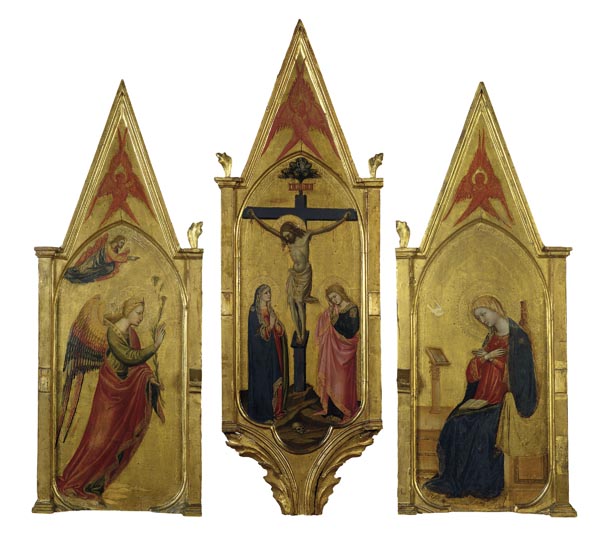 |
Detail from the Golden Legend
Huntington Digital Library |
Another manuscript of the Golden Legend gives us this week's Annunciation, in a book described by the Huntington Digital Library in great detail:
Jacobus de Voragine's Legenda aurea written in France, perhaps in Paris, during the next to the last decade of the thirteenth century. Manuscript in England by the third or certainly the last quarter of the fourteenth century, to judge by the script of the note added on f. 11v, correcting the king's name from "Edmundus" to "Edwardus." .... Written by two scribes in a gothic book hand.... Written instructions to the illuminator are present for approximately one third of the miniatures; they tend to be more complex and closer to the text than the resulting miniature. Rudimentary sketches, or evidence of sketches, for the miniatures occur in about one quarter of the cases; a number of miniatures have both the written directions and the preliminary sketch. Other Decoration: Major initials, 9- to 7-line, in dull pink or blue, patterned in white against a cusped ground of the other color, infilling in a darker shade of the same color as the initial, with grotesque or leaf forms decorated with burnished gold, and marginal extensions. Initials, 4-line, to introduce the Etymologia of similar style; secondary initials, 2-line, alternating red and blue with flourishes of the other color. Line fillers in the shape of mice, the same as the decoration on the catchwords. Carefully corrected throughout by the scribe of the text, corrections in yellow boxes. Some marginalia in various hands up to 16th century. Input into Digital Scriptorium by: C. W. Dutschke, 8/2/2012. Cataloged from existing description: C. W. Dutschke with the assistance of R. H. Rouse et al., Guide to Medieval and Renaissance Manuscripts in the Huntington Library (San Marino, 1989). Bound in original[?] oak boards, quarter backed in modern mottled calf; remains of 2 fore edge straps of pink leather closing to pins on the center back; flyleaves, washed, contained a 15th century prose text in French in 2 columns, written in a Bâtarde script.
See the whole page (in fact, peruse the manuscript!) on the site of the Huntington Digital Library!



